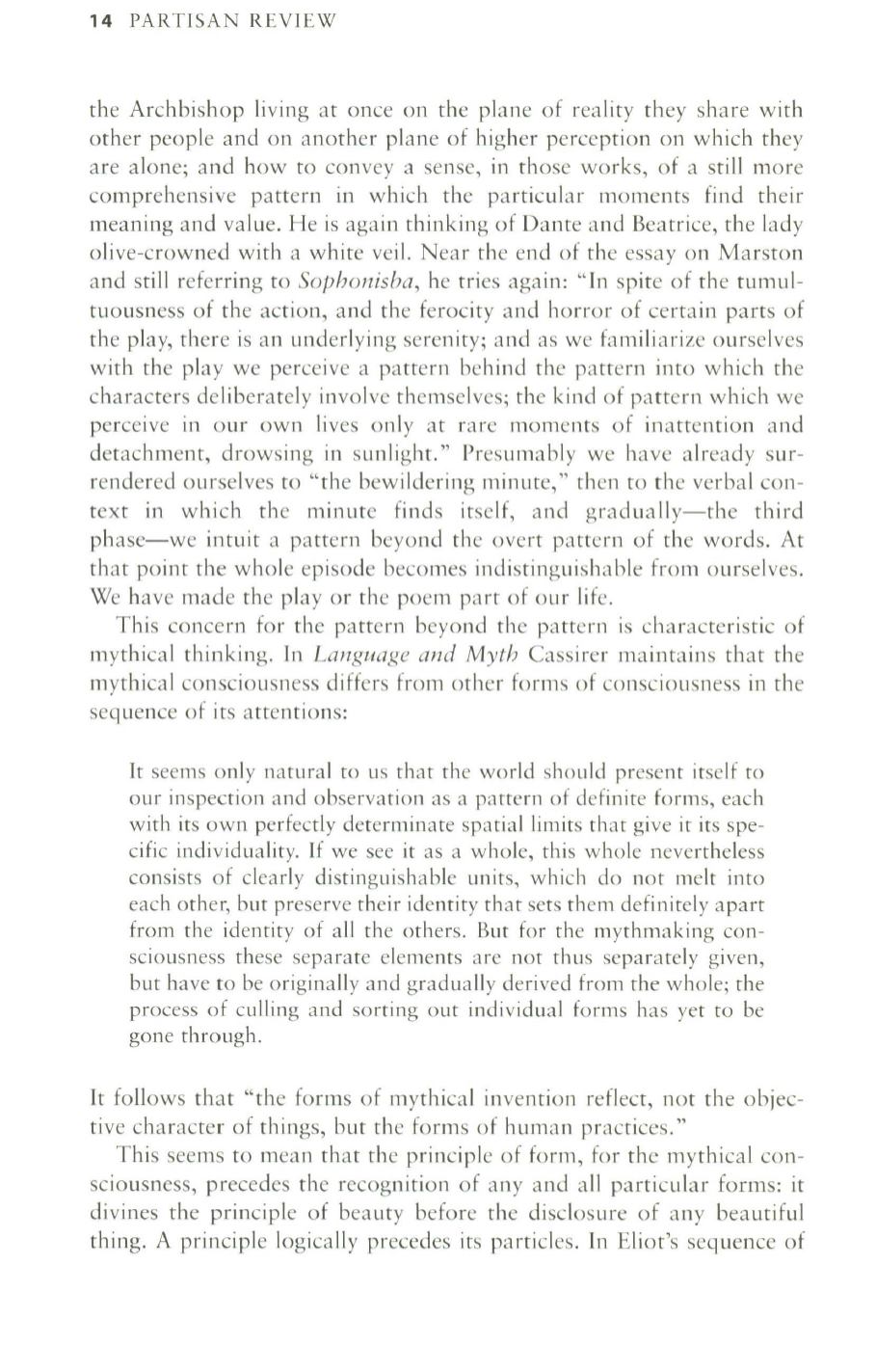
14
PARTISAN REVIEW
the Archbishop living at once on the plane of reality they share with
other people and on another plane of higher perception on which they
are alone; and how to convey a sense, in those works, of a still more
comprehensive pattern in which the particular moments find their
meaning and value. He is again thinking of Dante and Beatrice, the lady
olive-crowned with a white veil. Near the end of the essay on Marston
and still referring to
Sophonisba,
he tries again: "In spite of the tumul–
tuousness of the action, and the ferocity and horror of certain parts of
the play, there is an underlying serenity; and as we familiarize ourselves
with the play we perceive a pattern behind the pattern into which the
characters deliberately involve themselves; the kind of pattern which we
perceive in our own lives only at rare moments of inattention and
detachment, drowsing in sunlight." Presumably we have already sur–
rendered ourselves to "the bewildering minute," then to the verbal con–
text in which the minute finds itself, and gradually-the third
phase-we intuit a pattern beyond the overt pattern of the words. At
that point the whole episode becomes indistinguishable from ourselves.
We have made the play or the poem part of our life.
This concern for the pattern beyond the pattern is characteristic of
mythical thinking. In
Language and
Myth
Cassirer maintains that the
mythical consciousness differs from other forms of consciousness in the
sequence of its attentions:
It seems only natural to us that the world should present itself
to
our inspection and observation as a pattern of definite forms, each
with its own perfectly determinate spatial limits that give it its spe–
cific individuality.
If
we see it as a whole, this whole nevertheless
consists of clearly distinguishable units, which do not melt into
each other, but preserve their identity that sets them definitely apart
from the identity of all the others. But for the mythmaking con–
sciousness these separate elements are not thus separately given,
but have
to
be originally and gradually derived from the whole; the
process of culling and sorting out individual forms has yet
to
be
gone through.
It
follows that "the forms of mythical invention reflect, not the objec–
tive character of things, but the forms of human practices."
This seems to mean that the principle of form, for the mythical con–
sciousness, precedes the recognition of any and all particular forms: it
divines the principle of beauty before the disclosure of any beautiful
thing. A principle logically precedes its particles. 1n Eliot's sequence of


